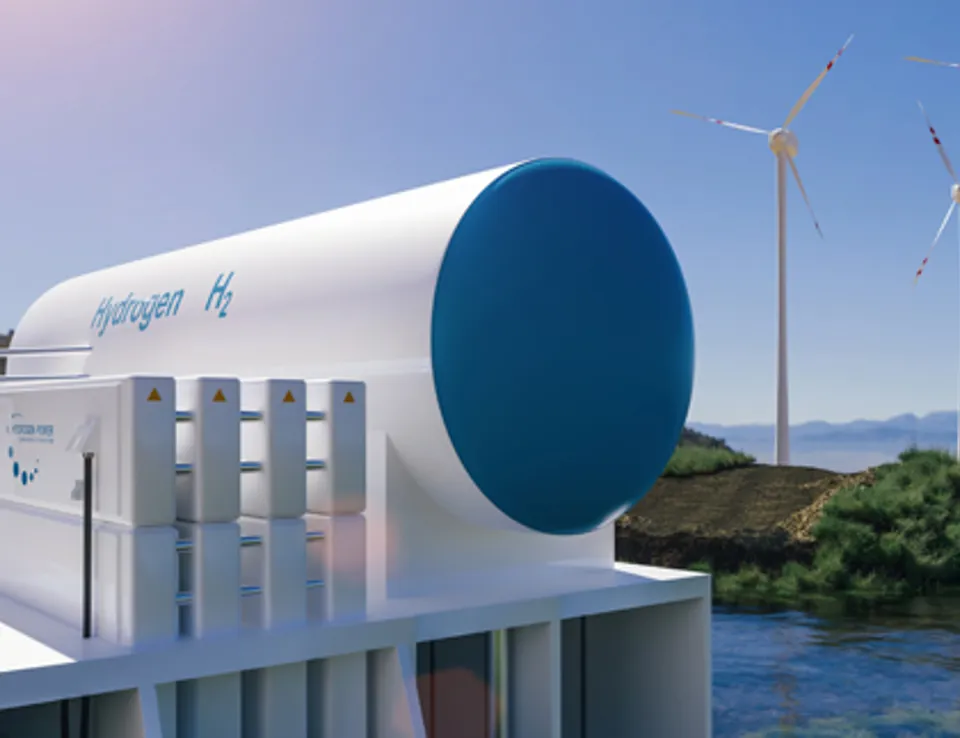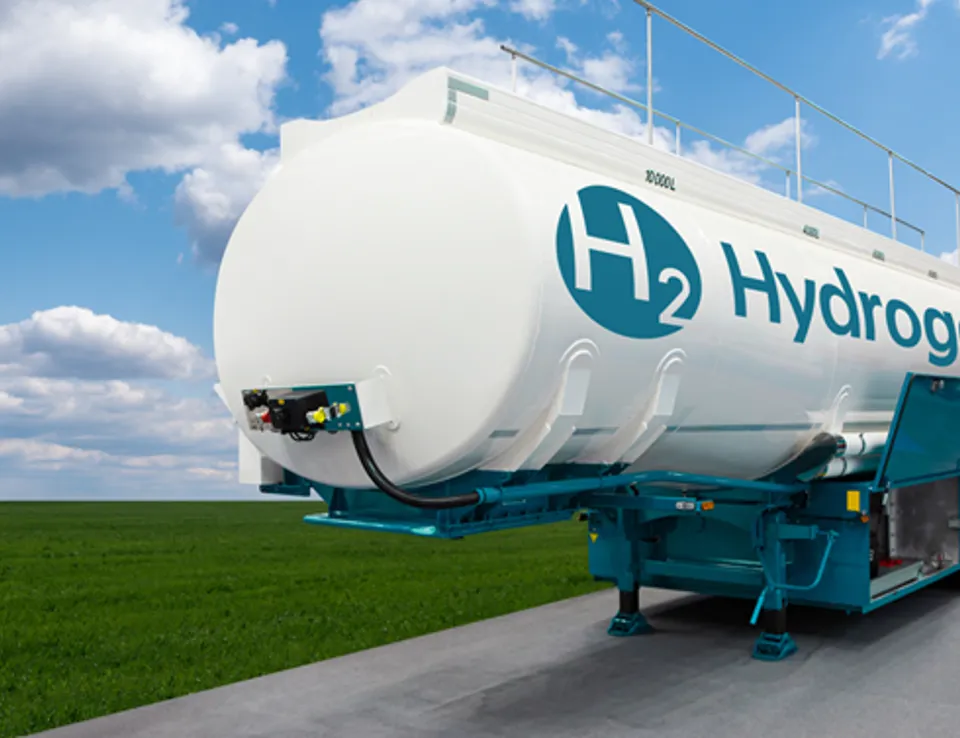Is hydrogen the energy of the future?
In this Q&A, Marvin Tchamiller, a consultant from the Technology Strategy team, discusses hydrogen and considers how we might use it as a fuel in the future. Marvin is a mechanical engineer with a background in diesel engines, electric vehicles and hydrogen fuel cell development. He is currently working with global automotive clients to develop their future technology and business strategy for 5 to 20 year horizons.
Q: Do you believe hydrogen is the energy carrier of the future, and can it help to halt climate emissions?
Marvin Tchamiller:
This is a challenging question to answer in 2021. I think it will be one of many energy vectors. As many governments have committed to the Paris Climate Agreement to reduce Greenhouse Gas (GHG) emissions, and they look for strategies to stimulate the economy following COVID-19, the clean energy sector is a priority area for governments to invest. There is definitely potential for growth. Demand for energy will continue to increase, and for many countries that rely on high-carbon energy sources, it is going to be very difficult to become Net Zero Carbon by 2050. The only way to turn this situation around is to exploit every technical option available. It’s not just about exploiting renewable energy, but how you carry that energy to industry or the general public. For example, if you are producing steel or heating and cooling homes, you need highly concentrated sources of energy. Hydrogen is considered to be a useful energy vector to address very difficult to defossilise and/or decarbonise applications such as heavy-duty trucks and high-temperature industrial processes. I don’t think that hydrogen will be the only energy vector we use in the future world, but it will be one of many solutions for transport.
Q: What's your view on battery electric vehicles versus hydrogen? Are they competing, or do they complement each other?
Marvin Tchamiller:
They are not competing technologies, and they do complement each other. Battery electric vehicles are exceptionally good for traditional passenger car applications and some commercial vehicle applications. There is a large proportion of commercial vehicle applications where hydrogen could offer a better solution especially when the vehicle is required to cover long daily distances, carry heavy payloads close to vehicle limit and long charging delays are not acceptable. The rapid progress of electric vehicles is also helping the development of hydrogen fuel cell technology because it uses a lot of technology developed for electric vehicles. It’s not a competition. It’s about making the most appropriate product available for the application and energy infrastructure context unique to each country. The new environmental policies of countries committed to reducing carbon emissions mean that investment into hydrogen infrastructure is also taking place. It will take time for that investment to be realised, for infrastructure to be developed and for hydrogen technology to move away from fossil fuels to clean processes (e.g. electrolysis using electricity generated from renewable sources).
Q: How do you think hydrogen will be used in the future?
Marvin Tchamiller:
Within road transport, I think it will be mainly used by heavy-duty applications. For large logistics fleet operators, the majority of CO2 emissions come from heavy-duty vehicles over 18 tonnes of gross weight. I think many of those vehicles will convert to hydrogen to reduce their tailpipe CO2 impact. To reduce the lifecycle impact, the hydrogen will need to come from renewable sources (or in the short term, employ CCS). In addition, there will be other sectors like heavy industry, aviation, rail, marine transport and building heating where hydrogen could be a pathway to transition out of fossil fuels. In the UK all gas boilers sold since 1996 are able to operate with up to 23% mix of hydrogen with natural gas. In Fife, Scotland, they are already doing an experiment where they are fitting 100% hydrogen-ready boilers to homes and using zero-carbon hydrogen produced from renewable energy (solar and wind) to heat those homes.
As of 2021, 99% of hydrogen we can buy is produced from fossil fuels (steam-methane reforming and coal gasification). There are positive signs that in the future, increasing proportions of hydrogen production could transition to renewable energy sources and fossil fuel processing with carbon capture and storage (CCS). The EU's hydrogen strategy sets a green or “clean hydrogen” goal to have 6 gigawatts of electrolysers installed by 2024. CCS is a parallel realm of development governments are looking into to reduce CO2 emissions, and its techno-economic merits will require close scrutiny. Hydrogen will be used as a method to join up demands of highly energy intensive industries to enable them to feed from a multitude of low/zero-carbon energy sources. Hydrogen could enable global trade in renewable energy at scales that are not feasible with pure electrical transmission & storage technology. This will require investment in renewable energy generation to be scaled up to match fossil energy production of today.
Q: How do you think different sectors and clients would begin a transition to hydrogen?
Marvin Tchamiller:
Firstly, they would need to find out the best way of accessing or transporting the type of hydrogen they need. Hydrogen is a difficult gas to manage. It’s the smallest molecule in the universe, and it can leak easily. You have to contain it either in high-pressure tanks, as a cryogenic liquid or bonded to metal hydrides to retain enough energy for a vehicle. The marine industry is considering the use of ammonia as a carrier of hydrogen, mitigating some of the difficulties of handling pure hydrogen. There are challenges and inefficiencies associated with ammonia, but what you have is a fuel for combustion engines or high-temperature fuel cells. I do think the road transport sector is likely to stick with pure hydrogen for the foreseeable future, in compressed gas form. The marine transport sector is very much interested in ammonia. Stationary power and aviation sectors are investigating ammonia, gaseous hydrogen and cryogenic liquid hydrogen for their merits in replacing fossil fuels. This approach could change depending on how technology develops in the next few years. I think clients should start by researching and planning their strategy around how they might adopt hydrogen to reach their objectives.
Q: What are the barriers that are preventing the use of hydrogen currently?
Marvin Tchamiller:
The key argument, and it's a valid argument, against the use of hydrogen is the efficiency from where it's generated to the point of use. So we refer to this as the ‘well-to-wheel’ energy efficiency. The ‘well’ is an analogy of the oil well. For green hydrogen, renewable energy is taken from wind or solar power and then that electricity is put into an electrolyser which breaks water molecules into oxygen and hydrogen. Electrolysis is the primary option for hydrogen production from renewable resources. That hydrogen then needs to be compressed and transported in gas lines or tankers. For every kilogram of hydrogen you consume for energy, quite a lot of energy has already been spent getting that energy to the paying consumer. When you consider the energy losses, you have to ask why not take electricity straight from a wind turbine and transmit over power lines to charge a consumer’s battery pack? It’s a far more efficient way of transporting the energy from its source to the consumer. At the moment, people involved in that chain of hydrogen transfer from source to the consumer are working on improving the efficiencies of electrolysers and the supply chain. The well-to-wheel efficiency of hydrogen can be optimised to some extent but can’t match a fully electric energy transmission to the user. After hearing the above, some people justifiably think, why bother and waste time and resources on hydrogen?
It is very easy for us to question the role of hydrogen in Europe where we are blessed with reliable electricity infrastructure, ample renewable resources and helpful geographic features. However, in the wider world, most of the high carbon-emitting markets have difficulties in
- Linking indigenous renewable energy resource to high demand centres due to large distances
- Local renewable energy demands outstripping supply
- Lack of energy storage capability
- Gaining access to a world market of stored renewable energy
- Linking off-grid and off-highway vehicles and power generation systems to renewable energy (e.g. mining and construction)
When you look at the global energy defossilisation challenge from this broader perspective, hydrogen offers a cost-effective and material-efficient way of storing and transporting energy over long distances. Loss in efficiency is a trade-off we may have to accept to make renewable energy displace fossil fuels across the world. Again, renewable energy production needs to be massively scaled up to enable this.
Q: How dangerous is it to transport hydrogen?
Marvin Tchamiller:
Hydrogen is as dangerous or as safe as any other combustible gas to transport; it just behaves differently. It’s crucial to adjust safety procedures so that they are appropriate for the particular characteristics of hydrogen. Once that is done, it isn’t any more dangerous than carrying compressed natural gas in tankers. In Europe, there is a very widespread gas pipeline network. There is some concern around how compatible hydrogen is with existing pipe materials, but pipelines made from Grade X70 steel are resistant to hydrogen embrittlement and impacts on fatigue life can be mitigated. If hydrogen comes straight into the home in future years, there may need to be some hydrogen safety checking procedures and instruments in place in the same way we check gas boilers and have carbon monoxide sensors today in buildings. Hydrogen has a much lower threshold for ignition, so safety is an important consideration. Storing hydrogen in vehicles is expensive because it needs to be held at very high pressure while the tanks need to be lightweight. The tanks are typically made of carbon fibre. They are expensive and energy-intensive to produce, generate high CO2 in manufacture and are currently not recyclable.
Q: How can you help organisations that are considering using hydrogen?
First of all, most organisations need to understand what their options are because hydrogen can be used in many different ways, and you could access it in many forms. We can help to identify what options are the best, most economical and lowest risk. It could even turn out to be something else other than hydrogen. At Ricardo, we are agnostic, and we are happy to recommend the best solution that’s most appropriate for the customer we are working with. It can often depend on what they do and where they do it. For example, it could be more effective to use battery electric vehicles in one country, but for the context of another, the best option could be hydrogen. An independent expert can assess the environmental and commercial impact of the whole lifecycle of a product to identify those nuances. That's where Ricardo can help. Under one roof, we provide every service from early techno-commercial assessments to actual technology development, manufacture and deployment. Clients come to us to better understand:
- What are the opportunities and risks of hydrogen?
- What role does hydrogen play in different world scenarios my company have to face in the future?
- What other forms can my customers access sustainable renewable energy?
- What is the life cycle assessment (LCA) based on the best technical options for our future products?
- What are the technical and business considerations we need to make?
- What are the different trade-offs that we need to decide?
- How do we communicate these complex decisions to our customers and shareholders, so they know we are taking the best paths available for a sustainable future?
- How do we develop and deploy these new technologies?
- Where and how should we manufacture hydrogen technologies?
It is challenging to rapidly transition from proven technologies to another and manage the risks, but we have world-leading experts who can guide clients through every stage.









